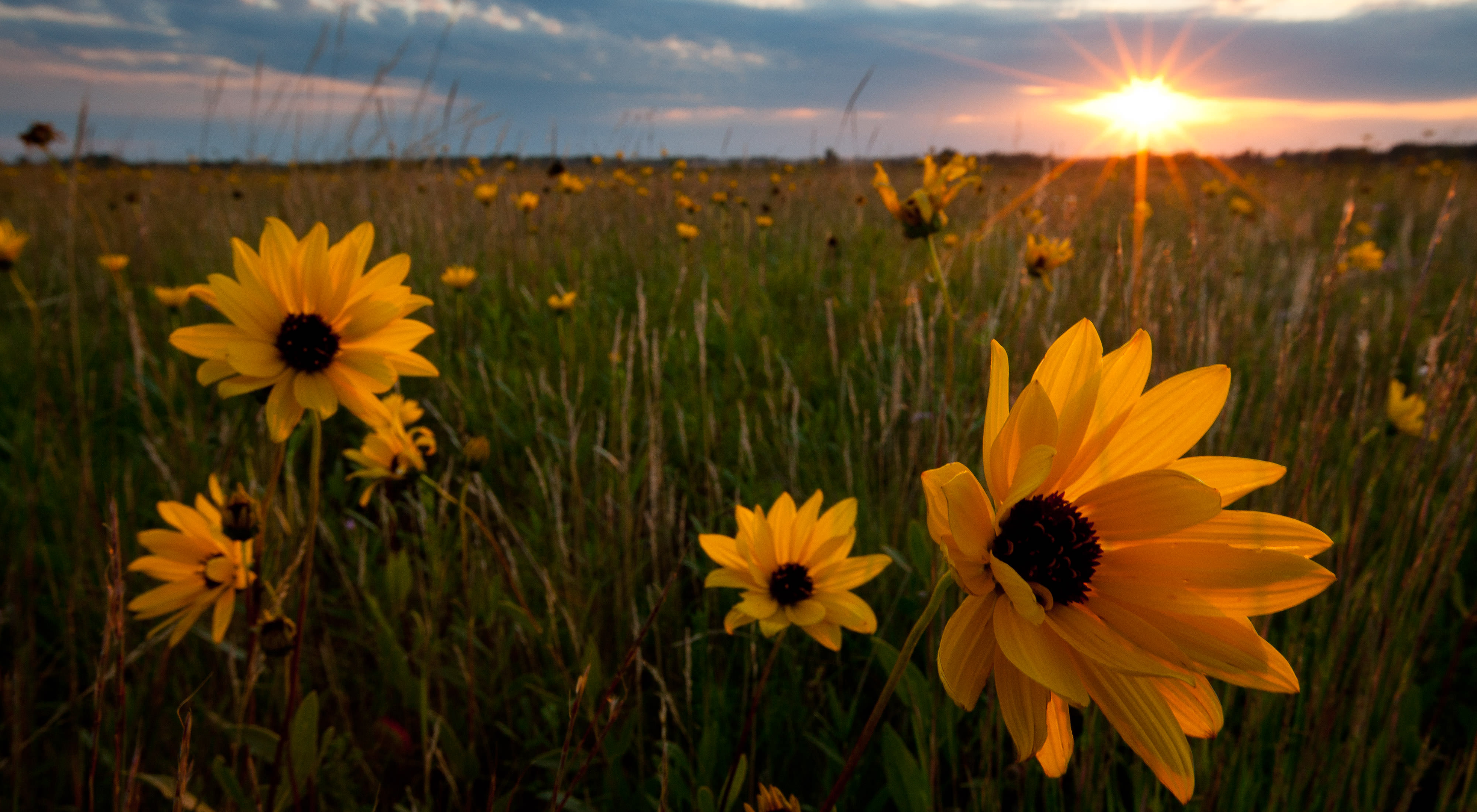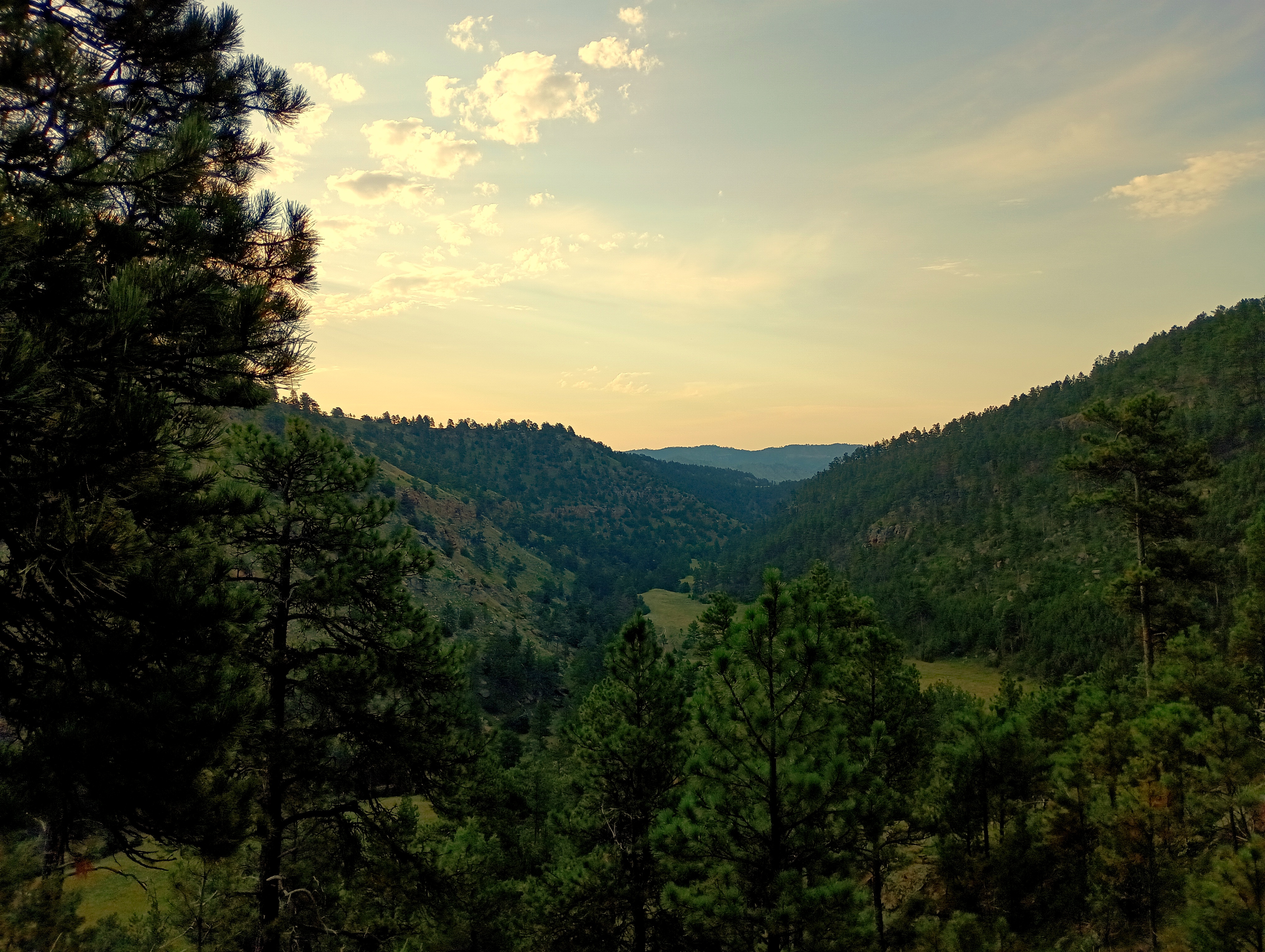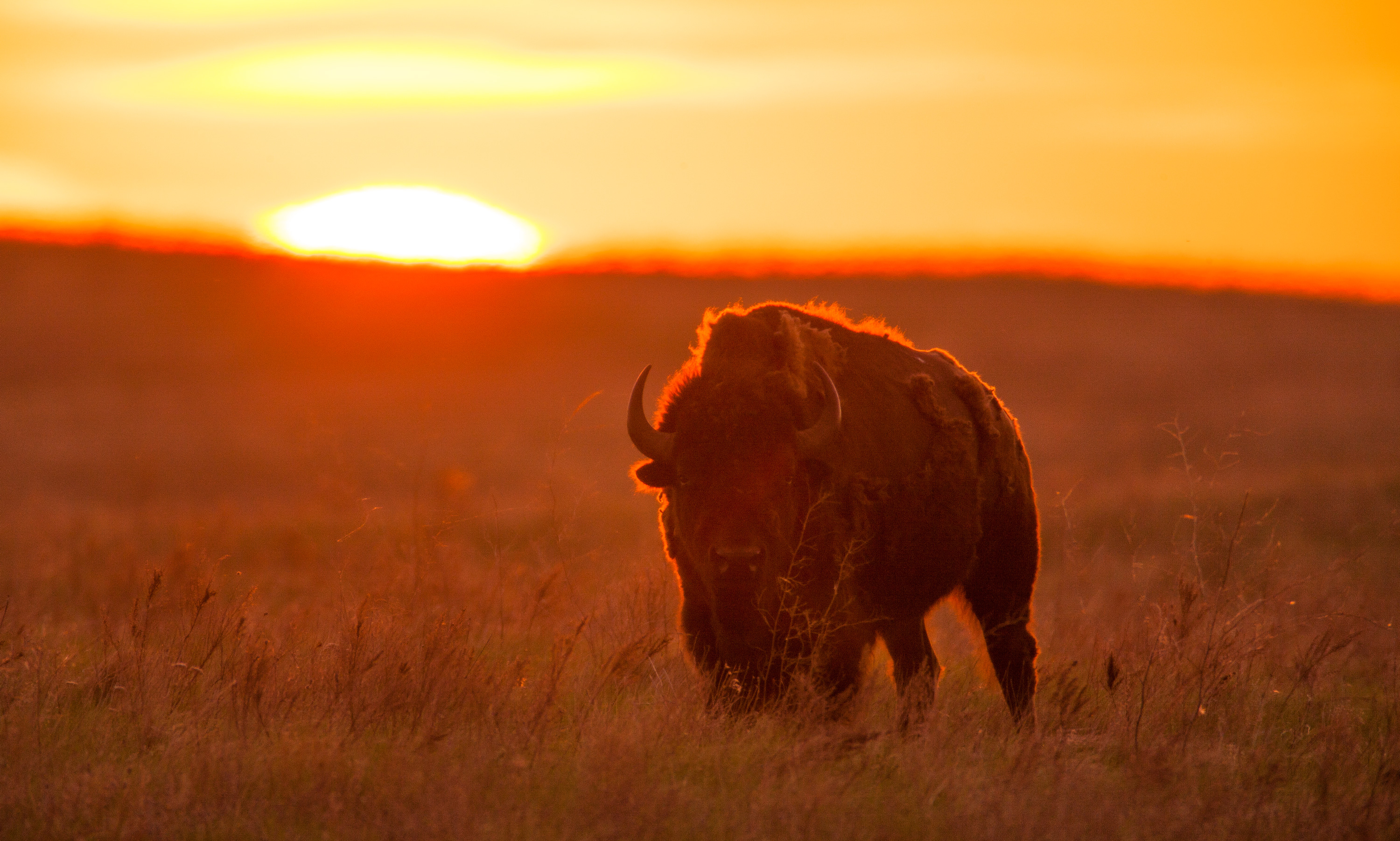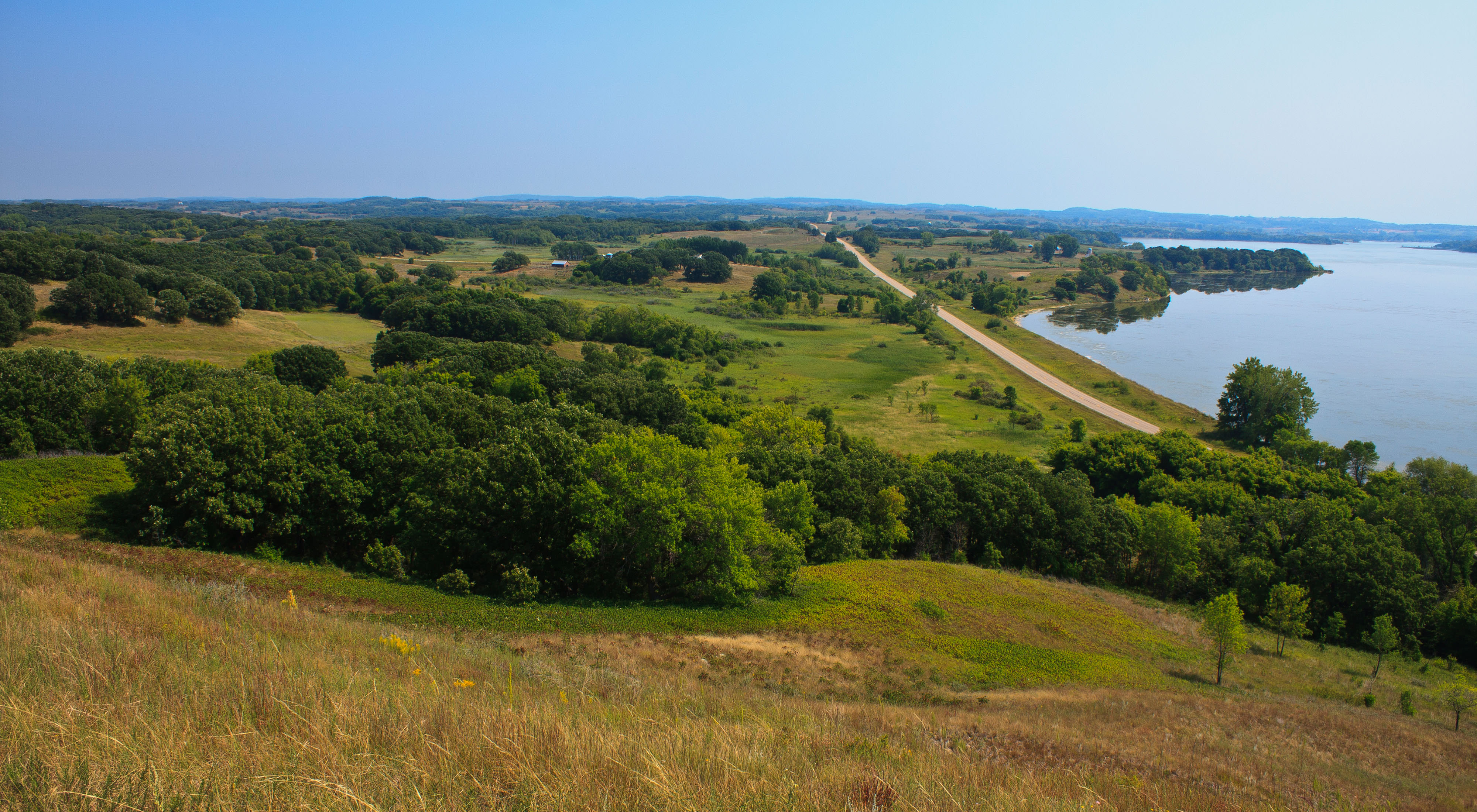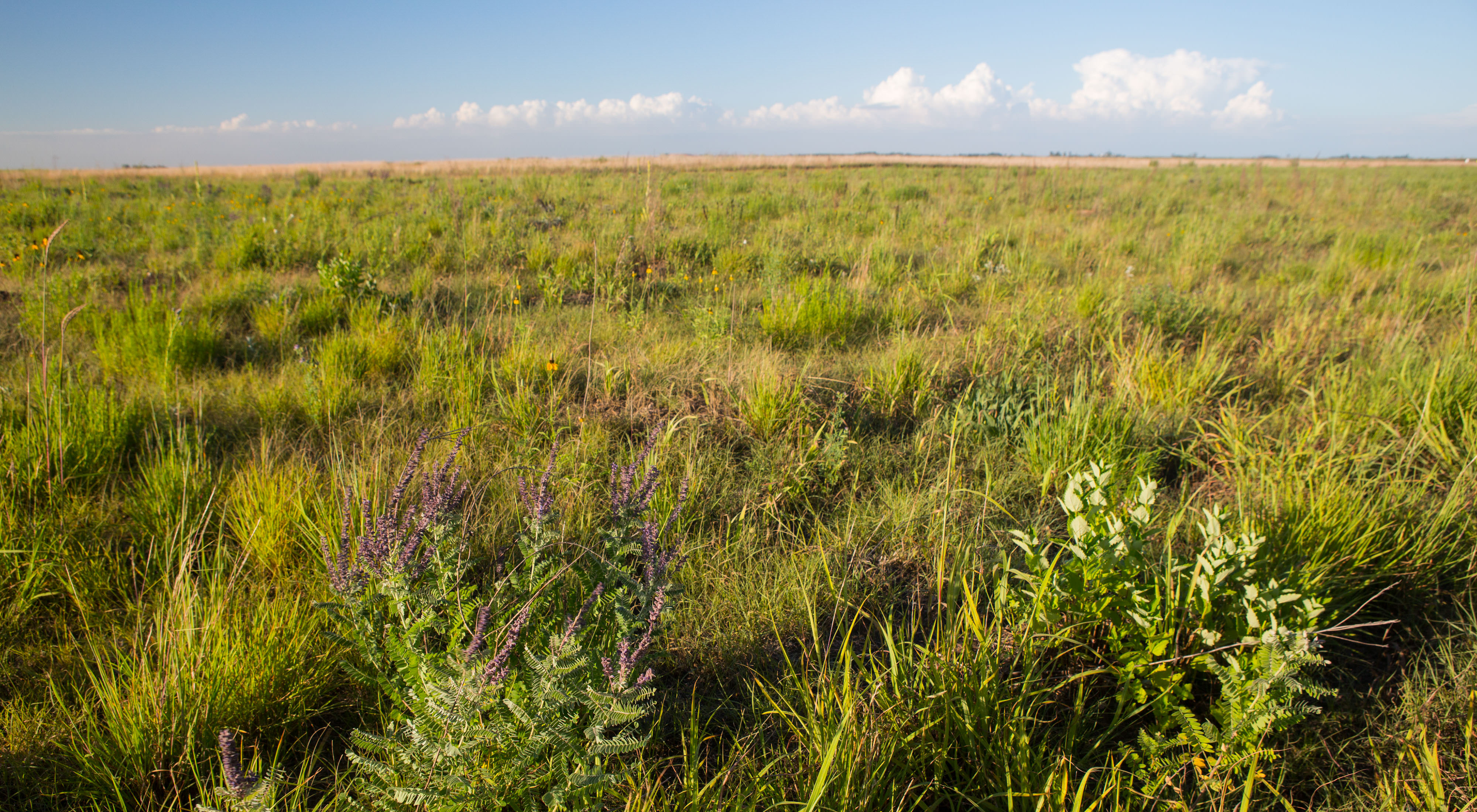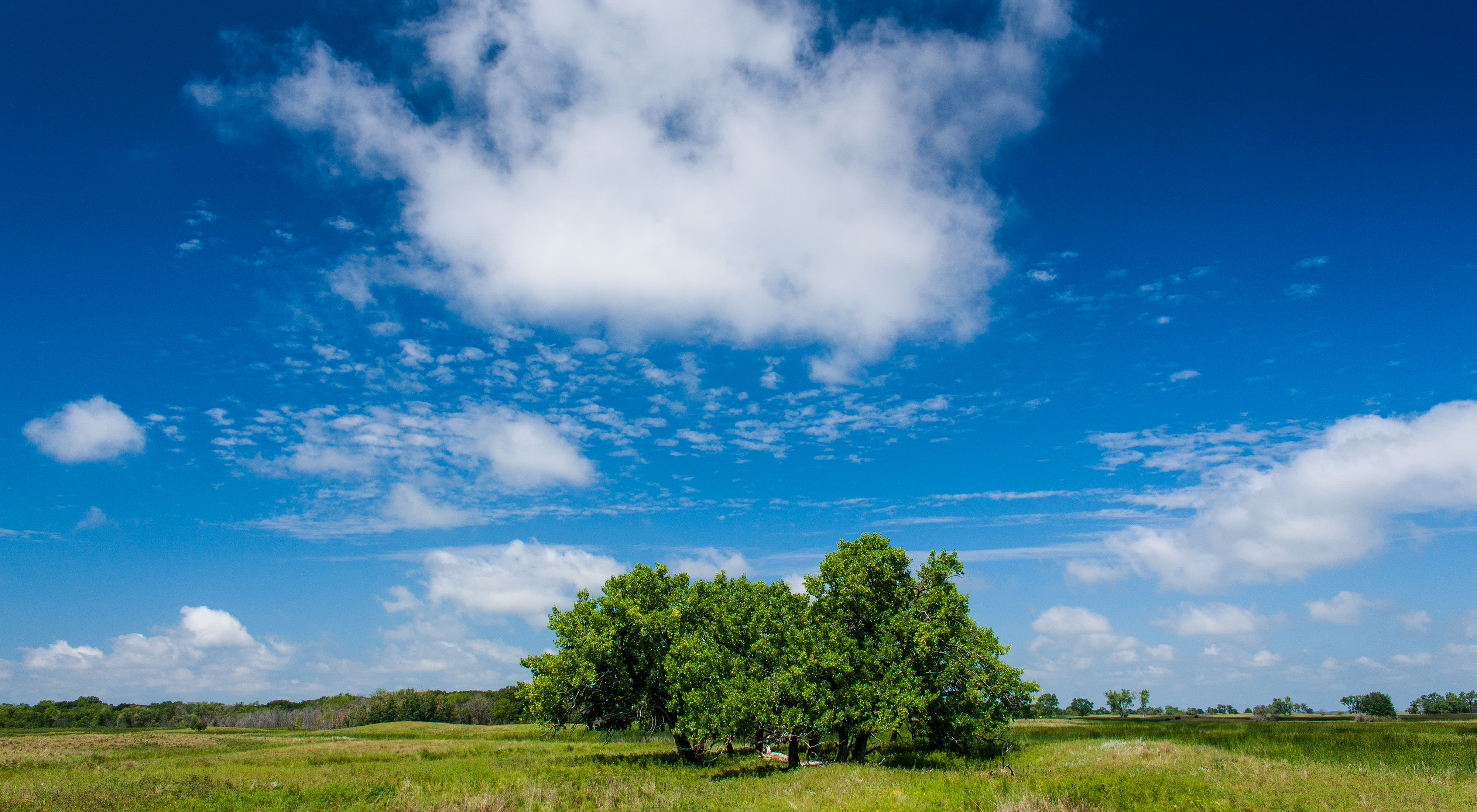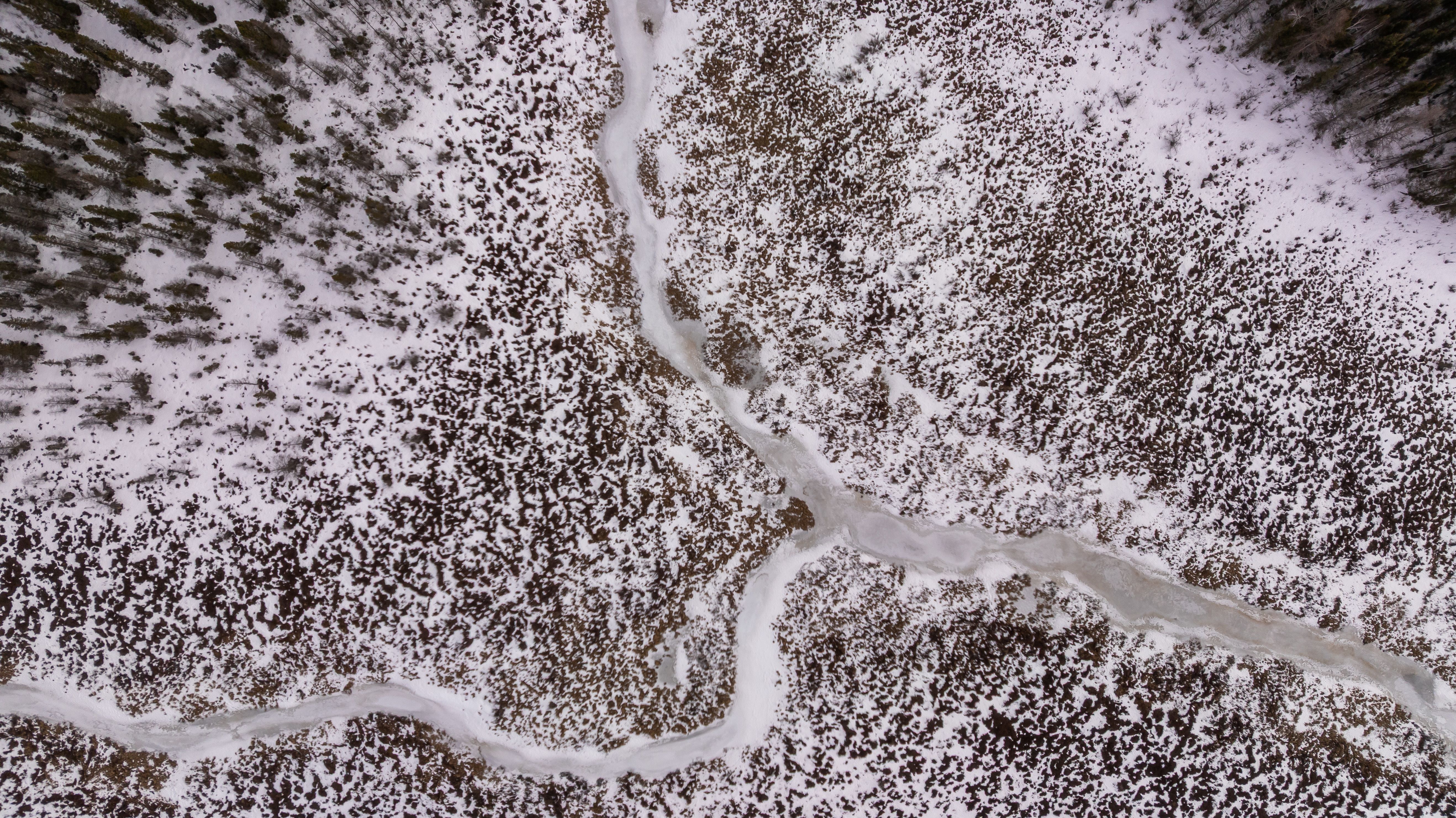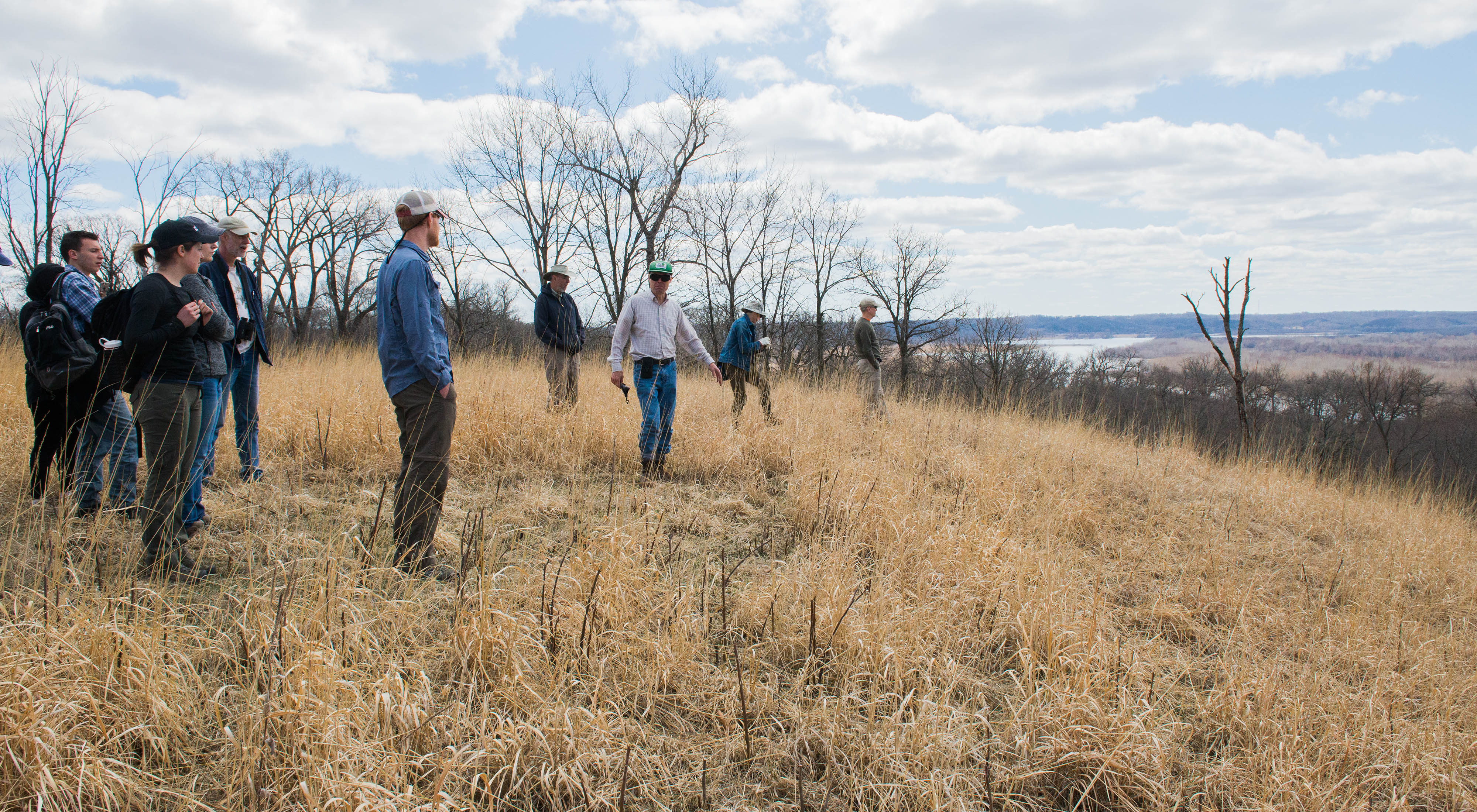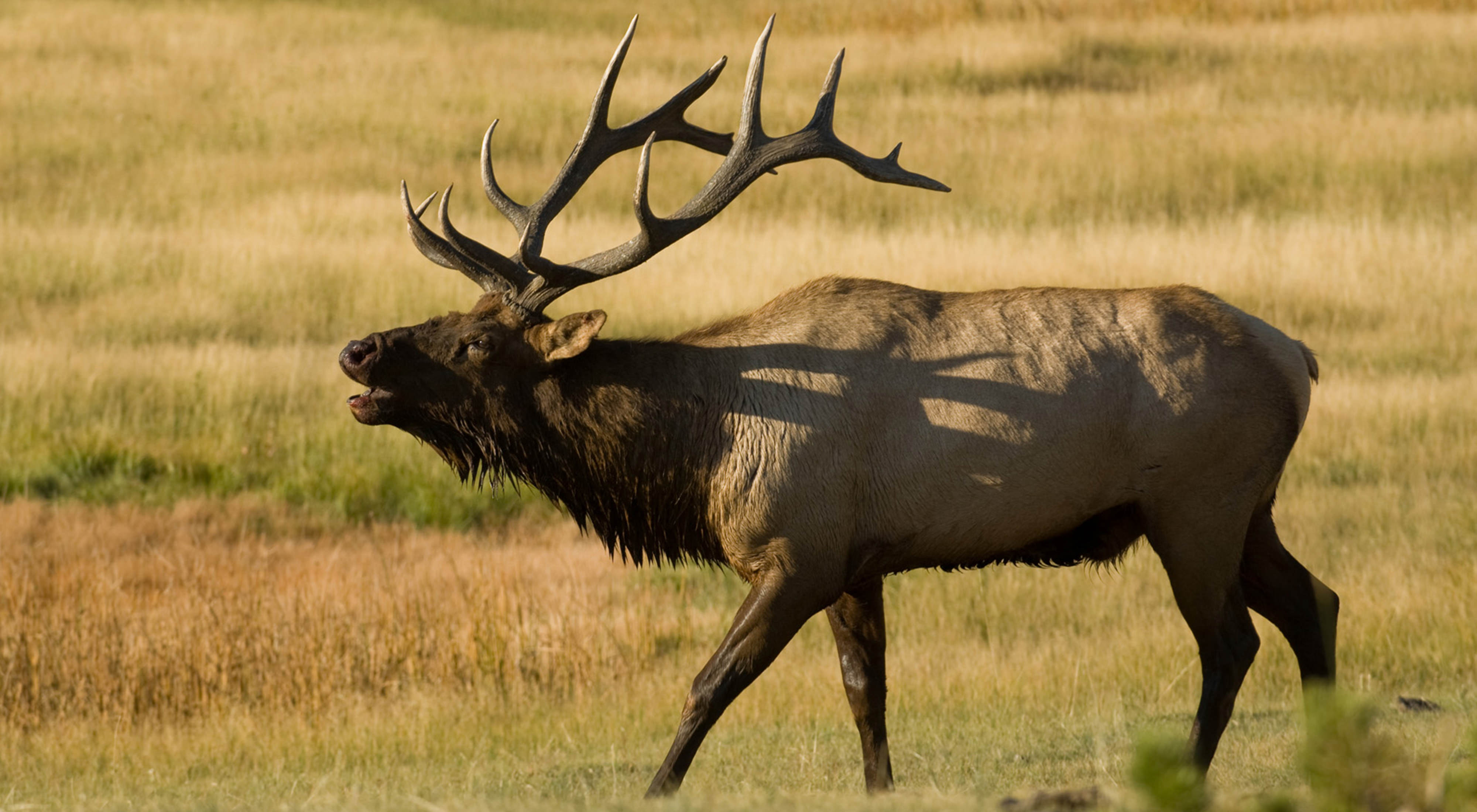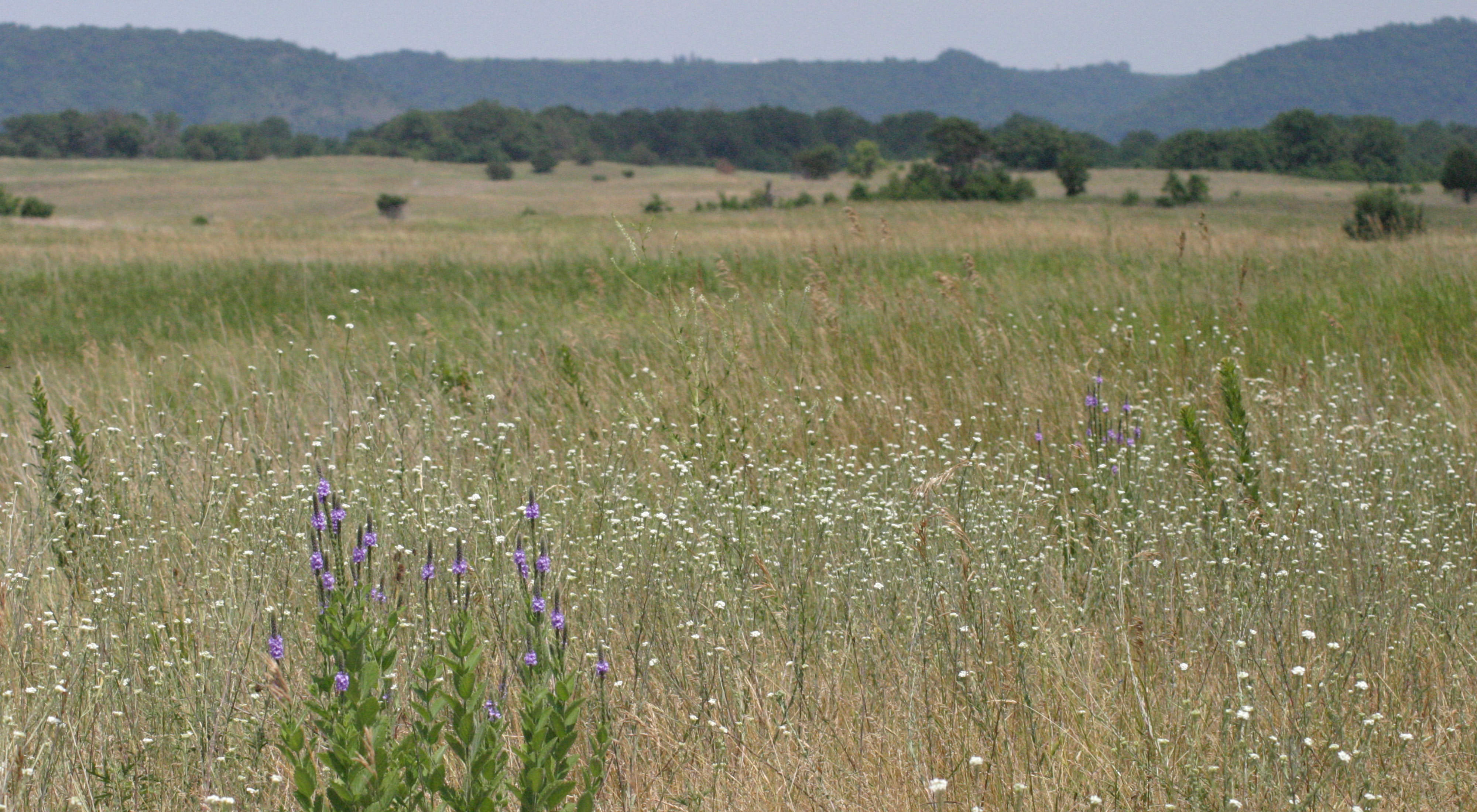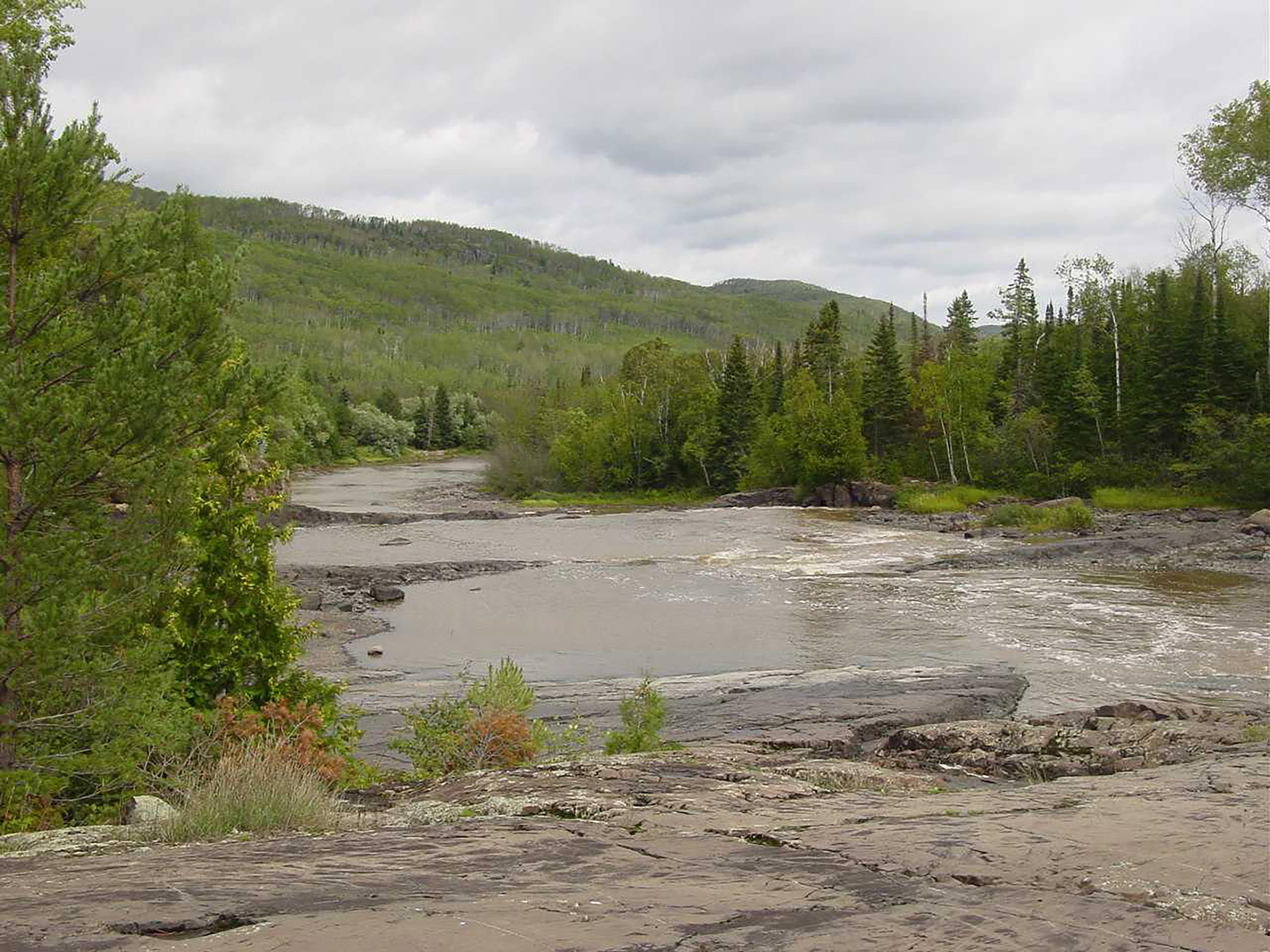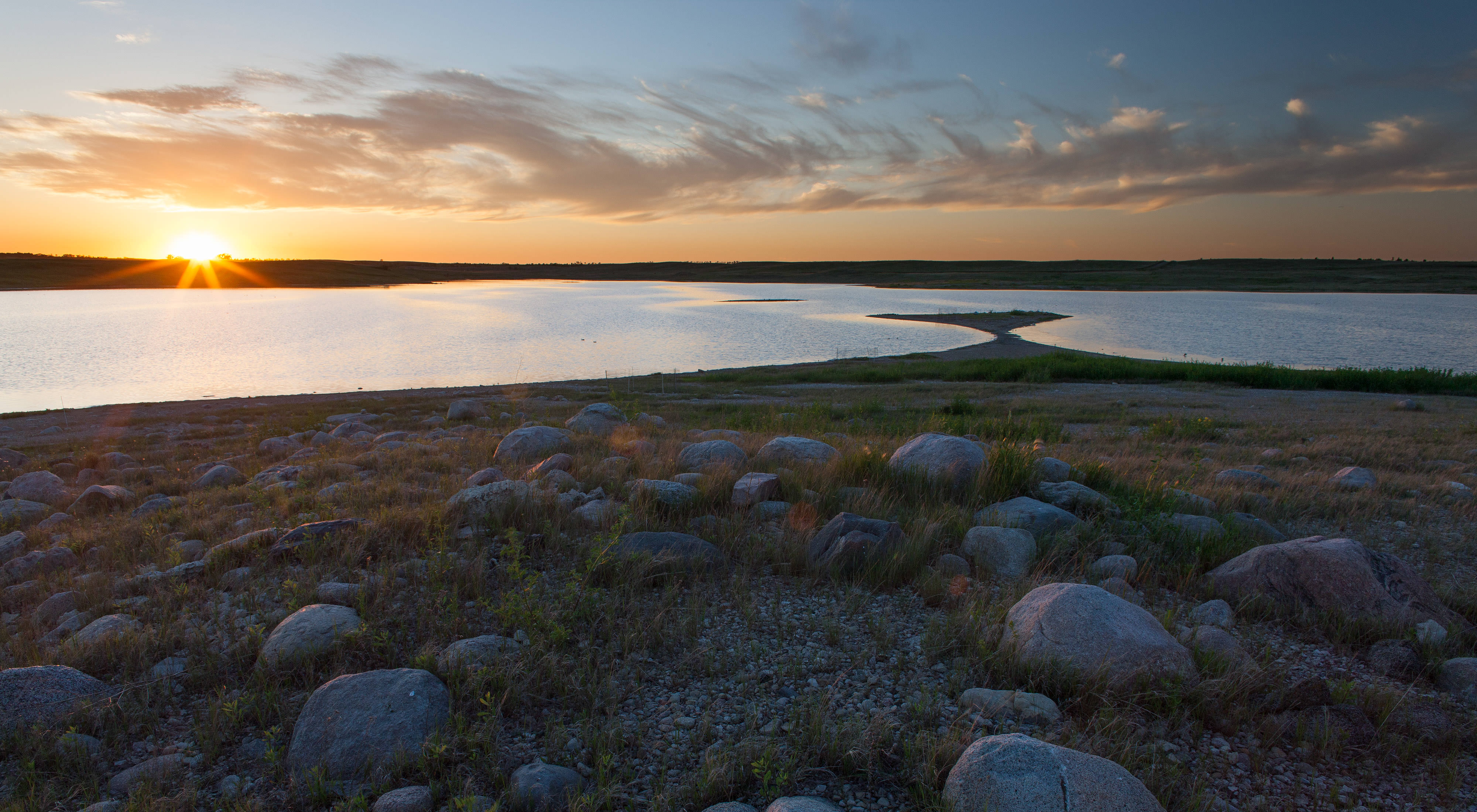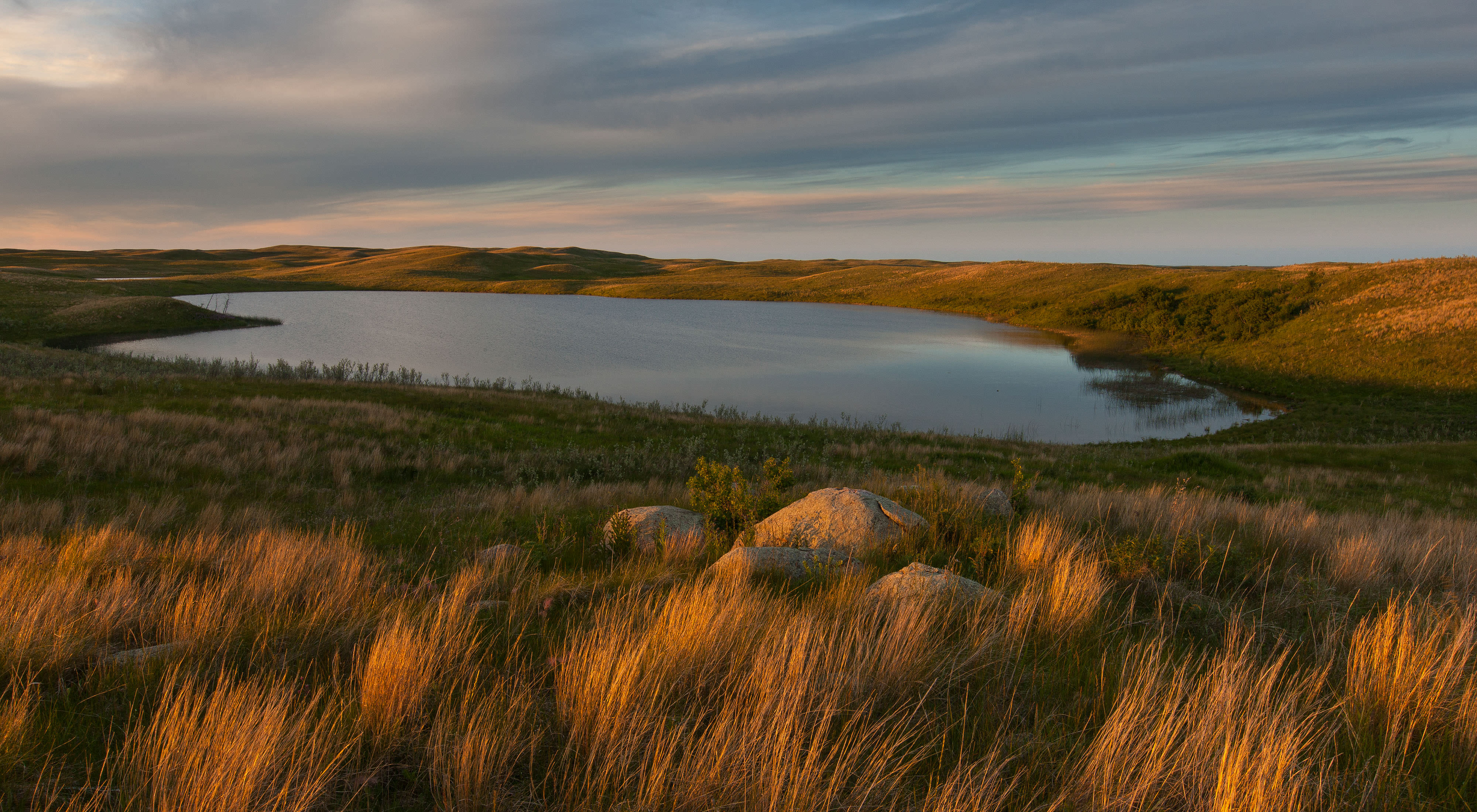About Us

Our planet is facing two existential crises: rapid climate change and the loss of biodiversity.
We have years, not decades, to address these threats. That’s why The Nature Conservancy is committed to helping conserve, protect or restore 30% of the world’s lands and waters and removing or sequestering 3 billion metric tons of carbon by 2030.
Our work in the Minnesota, North Dakota and South Dakota chapter is aligned with those bold goals. Our nonpartisan, science-based approach and collaboration with local partners will help us realize a future where people and nature thrive.
Our Priorities
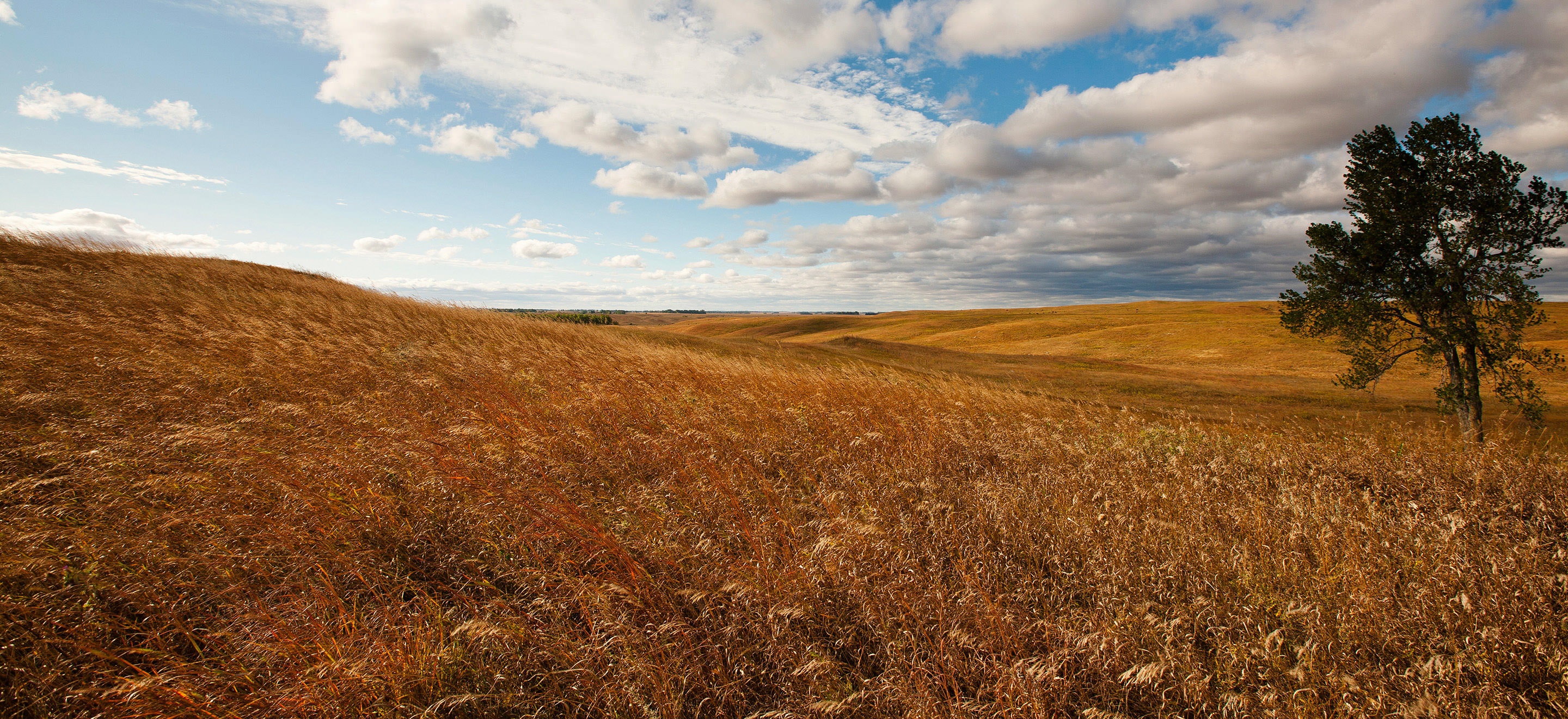
Protect Land & Water
The Nature Conservancy has helped conserve more than 1 million acres across Minnesota, North Dakota and South Dakota. Yet the rivers, lakes, forests and prairies we’ve worked for decades to protect are facing unprecedented threats that require us to significantly increase the pace, scope and scale of conservation.
The northern tallgrass prairie once covered swaths of western Minnesota and eastern North and South Dakota. Nearly 96% of this prairie has been lost. The mixed-grass prairies of western North and South Dakota have also been hit hard, with about half of these grasslands converted for uses like agriculture. Forests once covered nearly two-thirds of Minnesota but have declined by 40%. And pollution, erosion and drainage have drastically altered our freshwater resources, including countless acres of wetlands and the iconic Mississippi and Missouri Rivers.
Those forests, grasslands and freshwater bodies are central to our health, our culture, and our economy. With your support, we will protect land and waters with new tools, new relationships and new urgency. Climate change is altering forests, grasslands, rivers and lakes, and our way of life. But with partners, leaders and everyone who lives, works and plays in these three states, we can take actions today that will benefit people and nature.

Three habitats, one mission
We are working to protect forests, grasslands and freshwater habitats across Minnesota, North Dakota and South Dakota in pursuit of our mission to protect the lands and waters on which all life depends.

Tackle Climate Change
The past decade has been hotter than any other time in recorded history. In Minnesota, North Dakota and South Dakota, climate change is altering our lands, our waters and our lives.
Imagine grasslands without prairie chickens, forests without moose, or lakes and rivers without loons and walleye. Experts predict that one-fourth of Earth’s species will be headed for extinction by 2050 if the climate-warming trend continues at its current rate. Farmers are trying to feed a growing population while adjusting to more extreme and less predictable weather conditions, putting the more than $37 billion combined annual income from agriculture across the three states on the line.
There are solutions available, and The Nature Conservancy isn’t waiting to act. Our research shows that proper land management can provide up to one-third of the emissions reductions necessary to keep temperature rise below two degrees Celsius—a critical threshold. Those practices—along with smart policies and strategies to help nature adapt—can bring us closer to a healthier tomorrow.
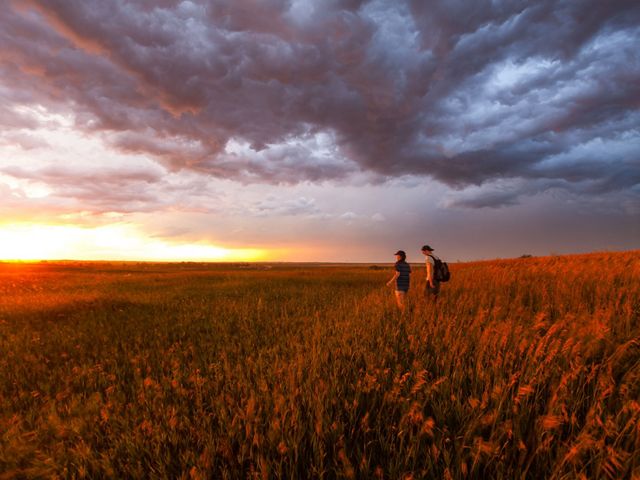
Our Changing Climate
We must act today to prevent extreme disruption to our economy, devastating health impacts and a loss of our way of life. Dig into our work using the power of nature and people to tackle climate change and discover how you can support a sustainable future.

Provide Food & Water Sustainably
Farmers and ranchers are stewards of the land, working to maintain their own livelihoods while nourishing people and nature. They can play a crucial role in addressing the climate crisis, improving water quality and protecting wildlife habitat while benefitting their bottom lines.
It is no small task. Agriculture production must double by 2050 to keep pace with the global population. That’s why in Minnesota, North Dakota and South Dakota, we are collaborating with the agriculture sector to provide enough healthy food for all of us while protecting nature.
With respect, collaboration and commitment to the shared goal of sustainable production, we can have clean water, abundant food and a thriving economy.

Our Work in Regenerative Agriculture
With more than 40% of the land across Minnesota, North Dakota and South Dakota covered by crops, we cannot have a meaningful impact on our conservation and biodiversity goals without addressing agricultural practices. Explore how we’re working to influence public policy, improve supply chains and deploy conservation agronomists.
Our Insights, Your Inbox
Keep up with great conservation work happening here at home and around the globe.
Our People
People are our greatest strength. Together, our staff, our dedicated trustees and advisors, and everyone who loves our states can meet this moment and ensure nature can sustain generations to come.
-
Get to know our senior leadership team.
Marissa Ahlering, Science Director, Fargo, ND
Rich Biske, Director of Water and Land Protection, Minneapolis, MN
Rachel Bush, Grassland Strategy Director, Bismarck, ND
Matt Graeve, Director of Stewardship—Minnesota, Cushing, MN
Jacqueline Hartman, Deputy Chapter Director—Culture & Operations, Minneapolis, MN
Angie Becker Kudelka, Deputy Chapter Director—Conservation, Minneapolis, MN
John Littlewolf, Tribal Nations & Indigenous Communities Partnership Director, Minneapolis, MN
Jim Manolis, Director of Forest Strategy and Stewardship, Minneapolis, MN
Mary Miller, Director of Stewardship—North Dakota and South Dakota, Leola, SD
Ann Mulholland, Chapter Director, Minneapolis, MN
Paul Imon Pedtke, Finance Director, Minneapolis, MN
Stephanie Pinkalla, Director of External and Government Relations, Minneapolis, MN
Anna Rockne, Marketing & Communications Director, Minneapolis, MN
For media inquiries, contact Ellie Scholtz, Marketing & Communications Manager, at ellie.scholtz@tnc.org.
Mark Staples, Government Relations Director, ND & SD, Baxter, MN
Eleanor Trenary, Federal Policy Director, Minneapolis, MN
Jamie Ziemann, Director of Philanthropy, Minneapolis, MN
-
Meet the knowledgeable, dedicated trustees who help advance conservation across Minnesota, North Dakota and South Dakota.
Mary Brainerd, Retired, former CEO and President, Health Partners, Mahtomedi, MN
Steve Christenson, Retired, former Global Regulatory Affairs SVP & Associate General Counsel, Ecolab, Inc. Minneapolis, MN
Margaret Chutich, Retired, Former Associate Justice, Minnesota Supreme Court, Orono, MN
Caroline Dayton, Community Volunteer, Nonprofit Board Work, Long Lake, MN
Claire Dempsey, Community Volunteer, Nonprofit Board Work, Edina, MN
Kristin Weeks Duncanson, Owner & Partner, Highland Family Farms, Mapleton, MN
Catherine Gunsbury, Founding Partner/Co-Owner, Solhem Companies, Minneapolis, MN
Jessica Hellmann, University of Minnesota Director & Ecolab Chair for Environmental Leadership, Institute on the Environment and Distinguished McKnight University Professor in the Department of Ecology, Evolution and Behavior in the College of Biological Sciences, St. Paul, MN
George Hicks, Co-Founder and Co-Executive Chair, Värde Partners, Minneapolis, MN
Michael Hoffman, Co-Founder & Managing Partner, NewBound Venture Capital, Excelsior, MN
Tadd Johnson, University of Minnesota Regent, Professor Emeritus, tribal attorney, and public servant, Member Bois Forte Band of Chippewa, Duluth, MN
Jay Kim, Chair, Retired, EVP & General Counsel and Chief Administrative Officer, Heartland Financial USA, St. Paul and Mabel, MN
Rick Kupchella, CEO, Kupchella Public Affairs, LLC, Minneapolis, MN
Craig Larson, Chairman of the Board/Executive Chairman, Starion Bank, Bismarck, ND
Sean McCauley, Co-founder, Alkalai Earth and Senior Advisor, TPG Capital, Rochester, MN
Leni Moore, Community Volunteer, former investment banker, Minneapolis, MN
David Mortenson, Chairman, Mortenson Construction, Minneapolis, MN
Tim Mulcahy, President & CEO, RMC Learning Solutions, Minneapolis, MN
Amanda Norman, Vice President, Sagiliti Inc., Minnetonka, MN
Brian Pietsch, Retired, former Senior Vice President Ameriprise Financial, Minneapolis, MN
Willie Rahr, President and CEO, Rahr Corporation, Minneapolis, MN
Dan Rykhus, Retired, CEO and President, Raven Industries, Sioux Falls, SD
Kathy Schmidlkofer, Vice Chair, Retired, President & CEO, University of Minnesota Foundation, Edina, MN
Peg Skold, Community Volunteer, Nonprofit Board Work, Minneapolis, MN
Randy Turner, Retired, former Assistant Federal Public Defender, Pierre, SD
Ben VandenWymelenberg, Founder and CEO, Woodchuck USA & Nature Link Resorts, Wayzata/St. Paul/Nisswa, MN
Pete Vorbrich, Retired, CFO CarVal Investors, Minneapolis, MN
Christina Woods, Executive Director, Duluth Art Institute, Duluth, MN
-
This group of distinguished leaders plays an important role in advancing our work to restore grasslands and a host of other important strategies in North Dakota.
Jerry Doan, Rancher & Owner, Black Leg Ranch, Bismarck, ND
Randy Kreil, Retired, Wildlife Div. Chief, North Dakota Game & Fish Department, Bismarck, ND
Craig Larson, CEO & Chairman of the Board, Starion Bank, Bismarck, ND
Mark J. Magness, Retired Banking Executive, Fargo, ND
George Sinner, Senior Vice President, Business & Ag Banking, Fargo, ND
-
Our work in South Dakota focuses on rangeland management and protecting and restoring key rivers and streams, and members of this local advisory board inform and guide those strategies.
Jim Faulstich, Rancher & Vice Chair, South Dakota Grasslands Coalition, Highmore, SD
Deb Mortenson, Rancher & Lobbyist, The Nature Conservancy, Hayes, SD
Gordon Ommen, Principal, Capitaline—Farmland Investment, Brookings, SD
David L. Reinschmidt, Partner, Munger, Reinschmidt & Denne, LLP, Burbank, SD
Dan Rykhus, President & CEO, Raven Industries, Sioux Falls, SD
Jeff Scherschligt, Pendar Properties, Sioux Falls, SD
Randy Turner, Chair, Public Defender, Pierre, SD
Jeff Zimprich, Producer, South Dakota Grasslands Coalition Board Member, Brandon, SD
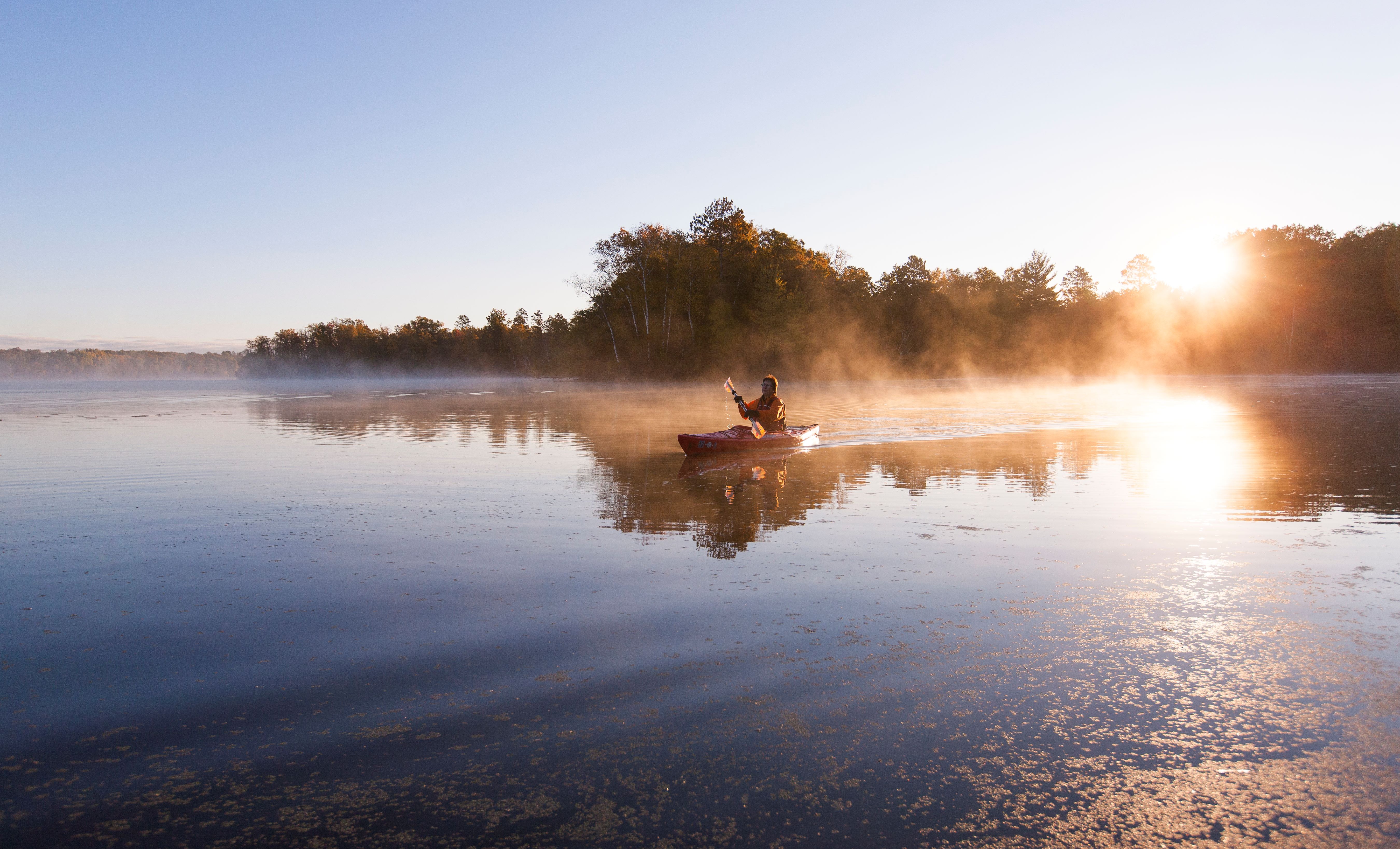
TNC Staff Voices
Our Perspectives
Stay in the Loop!
Sign up for the newsletter to get our perspectives, nature news and more.
Our Preserves
Our network of preserves offers opportunities for you to experience some of the most iconic habitats of our region, and they serve as places for us to test and demonstrate conservation practices. Plan your visit to a preserve today.
Preserves in MN, ND and SD
Explore some of the places we protect that are open to the public.
Places We Protect
No results are shown. To see results, turn on the toggle switches in the legend.
- Bluestem Prairie
-
Bluestem Prairie
Bluestem Prairie Preserve is one of few places in the state where visitors can experience the vastness of the native prairie that once covered a great portion of western Minnesota and the Dakotas. Watching the prairie chickens “booming” in early spring is a special highlight, and blinds have been built to accommodate viewing.
- Helen Allison Savanna
-
Helen Allison Savanna
Helen Allison is an excellent example of oak savanna. Today, fewer than 65,000 acres of oak savanna remain in the Midwest—two-tenths of one percent of the pre-settlement savanna.
- Ordway Prairie
-
Ordway Prairie
The patchwork landscape of Ordway Prairie combines grasslands and woods in a mosaic representation of millions of acres in the Midwest, where competition between forest and prairie was intense. On top of Ordway's sharply rolling, glacially deposited hills lies dry hill prairie. Visitors can enjoy a grand view of this prairie from the top of the hill at the historical marker.
- Whitney Preserve
-
Whitney Preserve
Whitney Preserve protects more than two miles of Cascade Creek, an undeveloped warm-water system formed by the merging of seven springs in the southern Black Hills, two of which are located on the preserve. The preserve protects four rare plants that grow along the stream’s banks.
- Moon Valley
-
Moon Valley
Moon Valley WMA includes nearly three miles of shoreline along the southern branch of the Middle Fork of the Zumbro River, which flows into the Mississippi River. The site has forested bluffs protecting a large spring.
- Cross Ranch Preserve
-
Cross Ranch Preserve
Cross Ranch is located along the only free-flowing section of the Missouri River in North Dakota. The river is bordered by some of the most extensive floodplain forests left in the state. Farther away from the river are uplands that are covered by mixed-grass prairie, which a herd of bison call home.
- Paul Bunyan Savanna
-
Paul Bunyan Savanna
The Paul Bunyan Savanna is one of five remaining jack pine savannas in the state. Hiking and cross-country ski trails maintained by Northland Arboretum ski club provide access into this rare habitat. In the savanna's sand soils grow prairie forbs and grasses, offering a shifting collage of colors from spring through fall.
- Lake Alexander Preserve
-
Lake Alexander Preserve
The Lake Alexander Preserve is centered in an 180,000-acre mosaic of mixed oak forest, wetlands, ponds and stands of red and white pine. The unfragmented nature of the preserve provides important habitat to songbirds dependent on the forest's interior.
- Seven Sisters Prairie
-
Seven Sisters Prairie
“The mountain” of Seven Sisters Prairie rises 190 feet above Lake Christina. It offers visitors a panoramic view of the surrounding countryside and of Lake Christina—an important stop for many species of waterfowl during migration—and of the rolling topography of the Alexandria moraine.
- Glacial Ridge Project
-
Glacial Ridge Project
Glacial Ridge is the largest prairie and wetland restoration project in U.S. history. It hosts a great diversity of plant species, including the federally threatened western prairie fringed orchid.
- Brown Ranch
-
Brown Ranch
The Sheyenne Delta, which encompasses Brown Ranch, was a river delta formed at the place where the Sheyenne River flowed into glacial Lake Agassiz some 15,000 years ago. Today, the Sheyenne Delta is one of the most important native prairie landscapes left in the Upper Midwest.
- Sand Lake / Seven Beavers Preserve
-
Sand Lake / Seven Beavers Preserve
The Sand Lake/Seven Beavers landscape is a vast, virtually unfragmented lowland conifer ecosystem with a mosaic of carbon-rich peatlands and forested uplands and is recognized as an area of outstanding conservation value in the state.
- Ottawa Bluffs
-
Ottawa Bluffs
Visitors to the top of the bluff on the west side of the preserve will be treated to a fine view of the Minnesota River Valley. Ottawa Bluffs can be a great place to see the pasque flower, the first prairie flower of the spring. These beauties can be found on the south-facing slopes in the prairie opening, especially toward the tops of the rises.
- Wallace C. Dayton Conservation Area
-
Wallace C. Dayton Conservation Area
The preserve is located within the Tallgrass Aspen Parkland landscape, one of the most intact grassland systems in the Midwest. The landscape harbors vital populations of moose, gray wolf, black bear, sharp-tailed grouse, yellow rail and sandhill crane. Cougar and elk are less common visitors here.
- Hole-in-the-Mountain Prairie
-
Hole-in-the-Mountain Prairie
Hole-in-the-Mountain is a large prairie remnant situated on a steep valley along the outer edge of the glacial escarpment known as the Prairie Coteau. Its undulating terrain is carpeted in wildflowers during summer. The preserve provides excellent habitat for rare prairie-dependent insects, including 25 species of butterflies, and nesting waterfowl, passerines and other grassland birds.
- Weaver Dunes
-
Weaver Dunes
Visitors to Weaver Dunes will be captivated by the majestic sand dunes themselves, some of which reach a height of 30 feet. Another highlight is the variety of vegetation on the site. With the arrival of fall, the foliage of the sand prairie and floodplain forests are spectacular. Look for wildlife including reptiles, migrating waterfowl and raptors at Weaver Dunes.
- Pigeon River Cliffs
-
Pigeon River Cliffs
A remarkable landscape feature of the Border Country—the Rove Slate Hills—is home to a unique assemblage of arctic and alpine plants. The Cliffs Preserve includes 100 acres and a mile of frontage on both the river and the lake. The preserve offers spectacular views of South Fowl Lake, the Pigeon River valley and “mountains” of the border country. The Border Route Hiking Trail crosses through.
- Samuel H. Ordway, Jr. Memorial Preserve
-
Samuel H. Ordway, Jr. Memorial Preserve
The grasslands of the Great Plains once covered one-fifth of North America. Ordway represents a fraction of what remains after the west was settled. Visitors are reminded of the history of the Great Plains through the numerous granite boulders and potholes that are evidence of the area’s glacial past.
- John E. Williams Preserve
-
John E. Williams Preserve
Local residents used to call this area the Valley of the Moon. Its scenery is stark with wide-open vistas. It is nearly treeless, consisting of gently rolling grasslands with numerous wetlands and large alkali lakes.
- Davis Ranch
-
Davis Ranch
Davis Ranch is one of the largest prairie landscapes in the Missouri Coteau. It is a mosaic of high-quality northern mixed-grass prairie studded with fresh, alkaline, ephemeral and permanent wetlands.
- Pigeon Point Preserve
-
Pigeon Point Preserve
Pigeon Point’s high diversity of wetland habitats and plant life is noteworthy. At least 15 rare plants are harbored in fen and wetland thicket habitats. The preserve also has one of the best developed, spring-fed streams in the Sheyenne River Valley.
